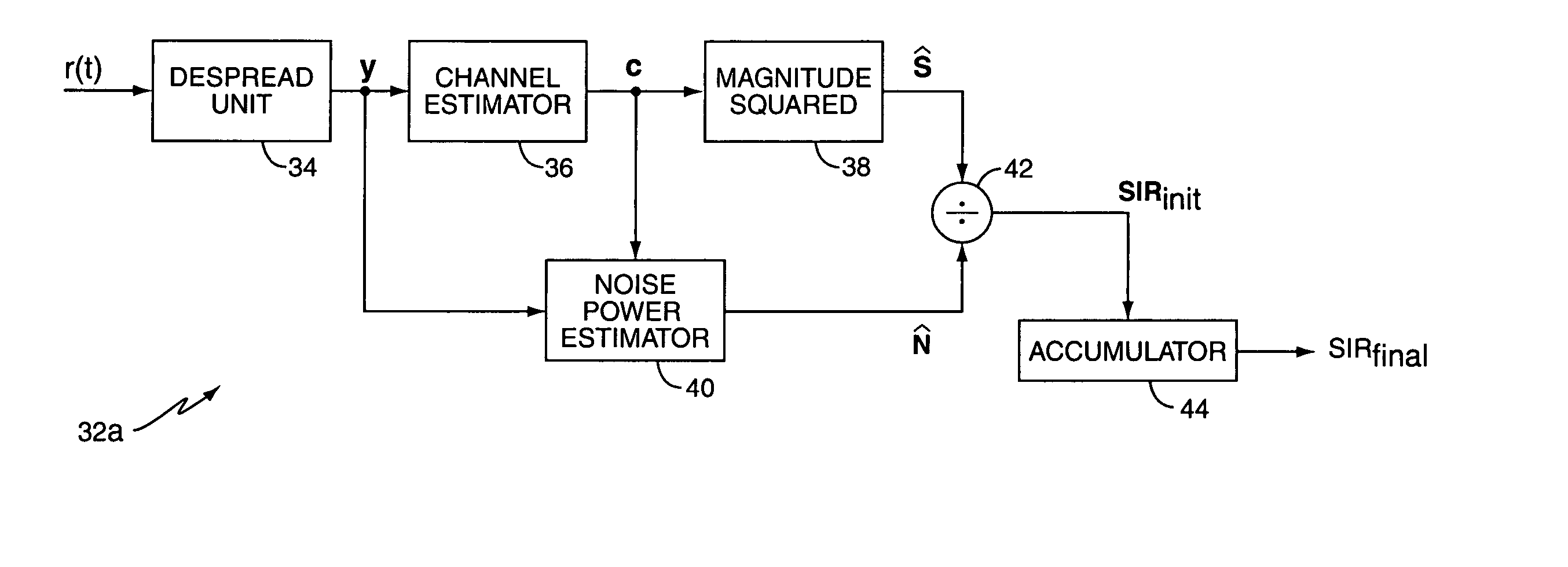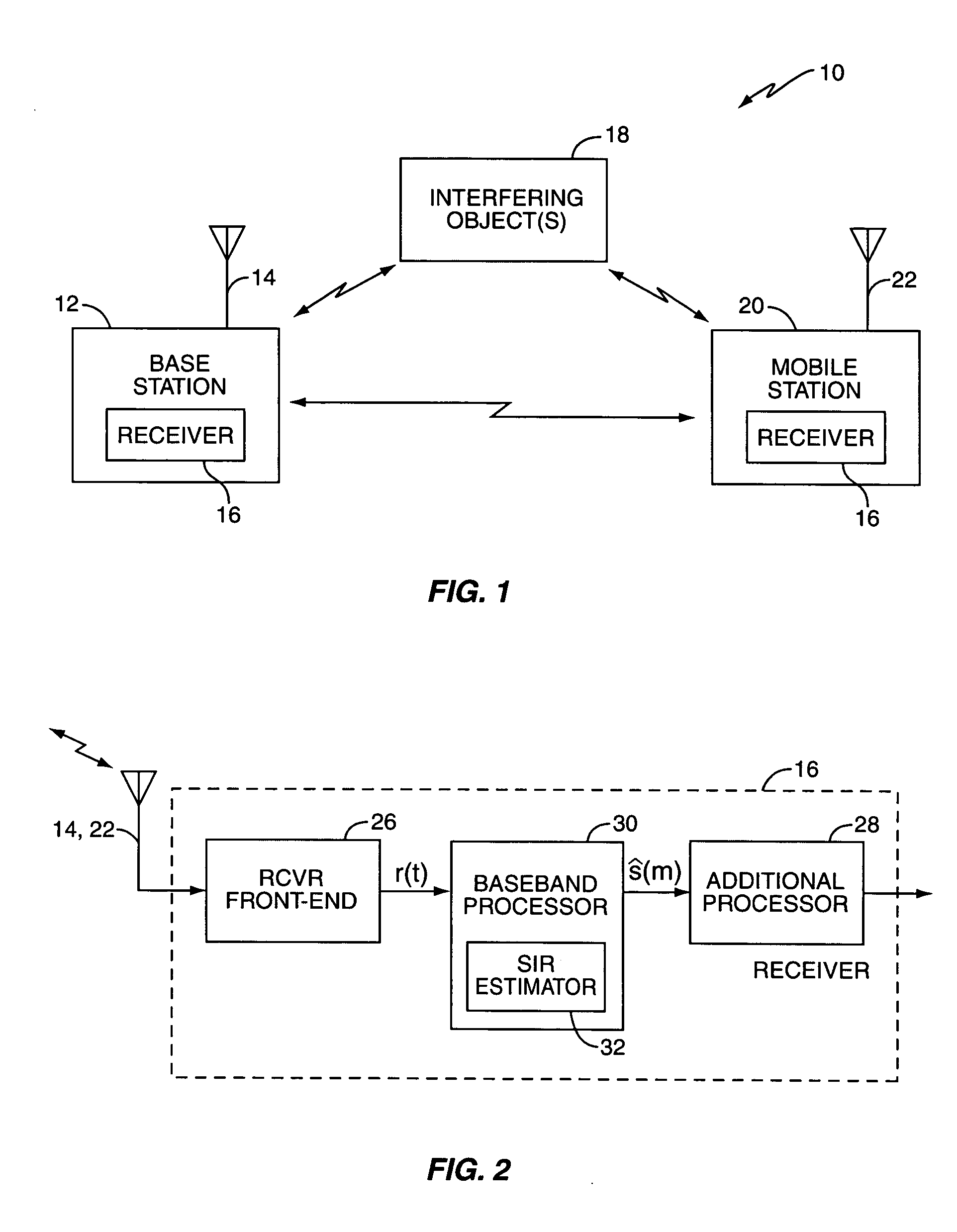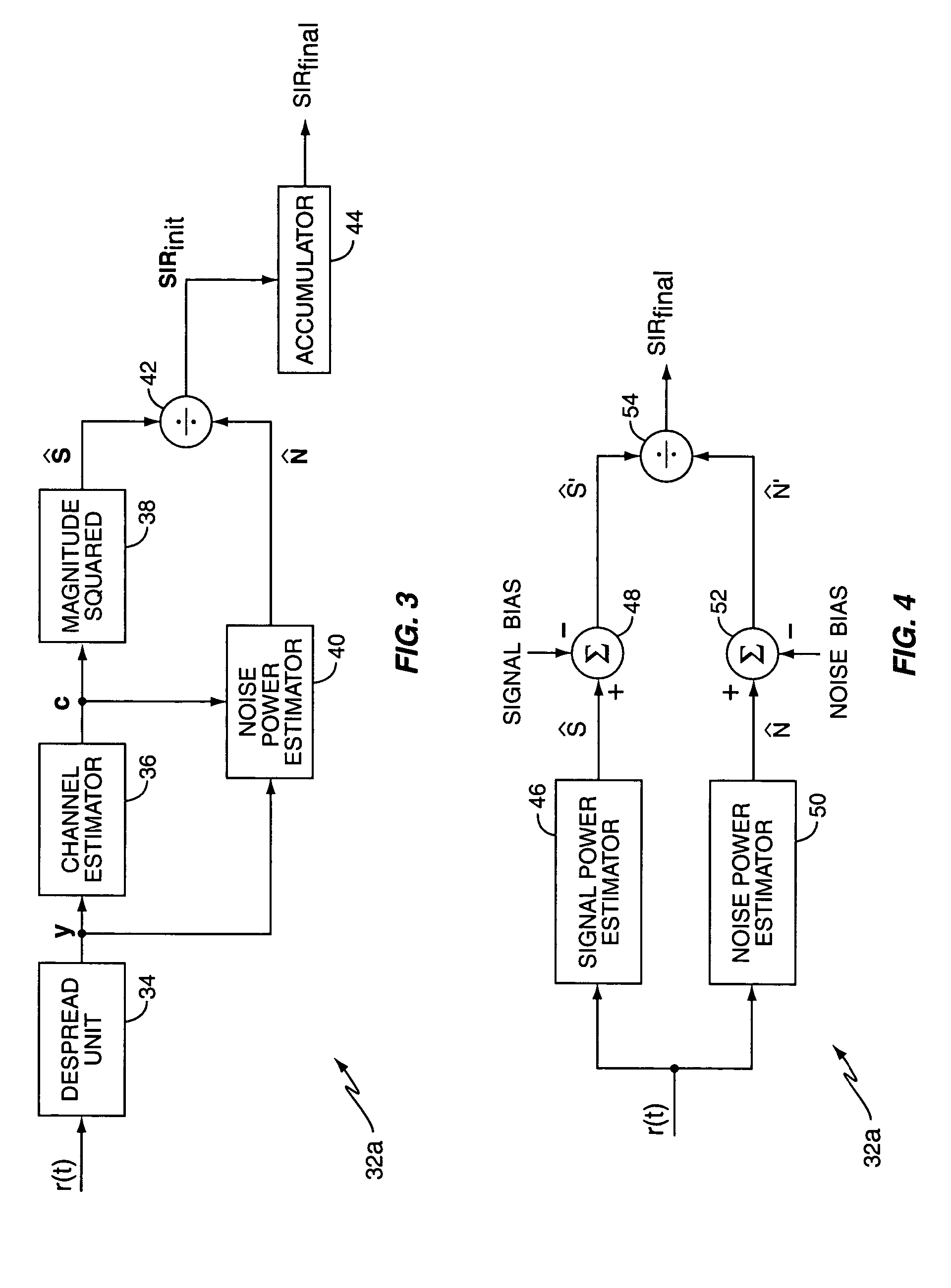SIR estimation in a wireless receiver
a wireless receiver and signal-to-interference technology, applied in the direction of transmission monitoring, amplitude demodulation, line-faulst/interference reduction, etc., can solve the problems of complex receiver architecture, insufficient sir estimates for real-time operations, and often biased sir estimates
- Summary
- Abstract
- Description
- Claims
- Application Information
AI Technical Summary
Benefits of technology
Problems solved by technology
Method used
Image
Examples
Embodiment Construction
[0026]FIG. 1 illustrates an exemplary spread spectrum wireless communication network 10. The wireless communication network 10 includes at least one base station 12, at least one mobile station 20, and possibly one or more interfering objects 18. As used herein, the term “mobile station” may include a cellular radiotelephone with or without a multi-line display; a Personal Communications System (PCS) terminal that may combine a cellular radiotelephone with data processing, facsimile and data communications capabilities; a personal data assistant (PDA) that can include a radiotelephone, pager, Internet / intranet access, Web browser, organizer, calendar, and / or a global positioning system (GPS) receiver; and a conventional laptop and / or palmtop receiver or other appliance that includes a radiotelephone transceiver. Mobile stations may also be referred to as “pervasive computing” devices.
[0027] Base station 12 includes one or more antennas 14 for transmitting / receiving spread spectrum ...
PUM
 Login to View More
Login to View More Abstract
Description
Claims
Application Information
 Login to View More
Login to View More - R&D
- Intellectual Property
- Life Sciences
- Materials
- Tech Scout
- Unparalleled Data Quality
- Higher Quality Content
- 60% Fewer Hallucinations
Browse by: Latest US Patents, China's latest patents, Technical Efficacy Thesaurus, Application Domain, Technology Topic, Popular Technical Reports.
© 2025 PatSnap. All rights reserved.Legal|Privacy policy|Modern Slavery Act Transparency Statement|Sitemap|About US| Contact US: help@patsnap.com



